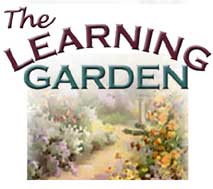
From Seed to Seed:
Plant Science for K-8 Educators
 |
From Seed to Seed: |
|
|
We have already learned that seeds contain embryonic roots, stems, and leaves, and enough food to keep the plant growing until it has the ability to produce its own food through photosynthesis.
Once germination requirements have been met, these embryonic plant parts begin to grow. Botanists are still debating whether cell expansion or cell division is responsible for this growth. Either way, the following process takes place:
.
Once the true leaves have completely emerged, the germination process is complete.
Relevant Books Gibbons, Gail. 1993. From Seed to Plant. Holiday House. ISBN:
0-8234-1025-0. Pascoe, Elaine. 1997. Nature Close-Up: Seeds and Seedlings. Blackbirch Marketing. ISBN: 1-5671-1178-5. |
||||||||||||||
|
Made possible by a grant from Oracle Corp. Copyright 2001, National Gardening
Association, Inc. For questions regarding this web site, contact Webmaster |